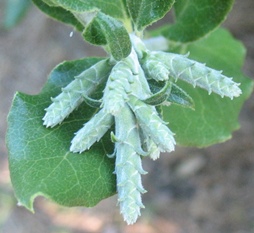
This section includes methods for sanitizing and disinfesting items, including propagules, potting media, and hard surfaces or objects.
Chemical treatments with sanitizing agents such as diluted bleach can remove external contamination, but will not affect pathogens that have infected plant parts and are growing in plant tissues.
Important: Chemical or heat treatments of propagules should be tested on a small set of plant material to ensure that the plant propagules will tolerate the treatment without significant damage or loss of viability. Viability of treated propagules may also decrease over time. Alternative durations, concentrations, or methods may be needed to prevent damage.
Propagules should be thoroughly brushed and/or rinsed to remove soil, dead tissue layers or roots, and other surface contaminants. Allow to dry if rinsed. Immerse propagules in a freshly-made diluted bleach solution followed by a rinse with clean noncontaminated water. Immersing materials in 0.525% sodium hypochlorite (Table 1) for a minimum of 1 minute is typically sufficient to eliminate surface contamination by Phytophthora and other oomycetes, most fungal pathogens, and many bacteria, but not all plant propagules will tolerate this time and concentration. Using the same concentration for a shorter duration (30 sec) or using lower concentrations (no less than 0.26% sodium hypochlorite) for 1 minute or more may provide similar levels of decontamination with less damage to more sensitive plant propagules.
Although hot water treatment (typical temperature ranges of about 120-125°F [49-52°C] for 30 minutes) can be effective for killing both surface contaminants and internal infections, insufficient research is available to make specific recommendations for California native plant materials at present. See Baker (1957) (section 13, starting p. 223 https://archive.org/details/ucsystemforprodu23bake) for a detailed discussion of heat treatment of vegetative propagules.